|
|
|
Suffolk's Wildlife Coast: A Guide to the RSPB Nature Reserves in Coastal SuffolkMalcolm Key, John Grant, Jenny James
RSPB
2012
"This new book will help you to find these reserves, guide you around them, explain their history and management, tell you which birds to expect in each season and give you details of the other animals and plants to be found there. Written and produced by members of the RSPB Woodbridge Local Group, as a successor to their previous book Spread Your Wings, its 124 pages are lavishly illustrated with maps and stunning photographs of wildlife. Suffolk's Wildlife Coast is packed with up-to-date information and data on species numbers and breeding success rates direct from the wardens and managers of the individual reserves. Suffolk's Wildlife Coast has been produced to show local residents and visitors alike the richness of wildlife waiting to be discovered. But it is also written in the context of the present challenges to wildlife and the success stories in dealing with these."
|
Buy from amazon.co.uk 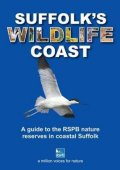
|
|
The Barley Bird: Notes on a Suffolk NightingaleRichard MabeyImages: Derrick Greaves
Full Circle Editions
2010
"Richard Mabey, described as "Britain's greatest living nature writer", explores the nightingale's links with Suffolk culture and landscape, and traces the bird's course through myth, lore and tradition. He plumbs his subject for its fascinating literary and historical references, and opens the reader's ears to the bird itself and its extraordinary song, a hymn to survival. New images by Derrick Greaves accompany the text."
|
Buy from amazon.co.uk 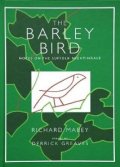
|
|
Sandlands: The Suffolk Coast and HeathsTom Williamson
Windgather Press
2005
"The Suffolk coast has long been a popular destination for visitors, who come to enjoy the tranquillity of resorts like Southwold and Aldeburgh, and the abundant wildlife, especially birds. Designated an Area of Outstanding Natural Beauty, the district's biological diversity derives from its unique combination of coastal wetlands, heaths, and extensive woods. This book explains how this distinctive landscape - the Sandlings or, to use an older name, the 'Sandlands' - evolved over centuries through the interaction of people and nature. Tom Williamson examines the origins and development of both the wildlife habitats and the wider landscape of fields, farms, towns and settlements. The landscape was firmly shaped by the hand of man. Yet at the same time, the character of local communities has itself been moulded by nature - and in particular, by the poor acid soils and the ever-changing form of the coast."
|
Buy from amazon.co.uk 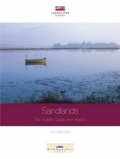
|
|
Spread Your Wings: A Guide to Five RSPB Reserves on the Suffolk CoastJohn Grant, Jenny James
RSPB
2004
A guide to the wildlife of the RSPB reserves on the Suffolk coast.
|
Buy from amazon.co.uk 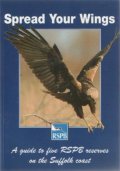
|
|
The Birds of SuffolkSteve Piotrowski
Christopher Helm
2003
"This county avifauna looks at the birdlife of Suffolk - one of the most important birding counties of England. Suffolk is relatively underdeveloped, with nationally important wetlands and heathlands, and a long, varied coastline. This text looks at Suffolk's history, geology, climate and ecology, and examines in detail the status of every species on the Suffolk list. The data presented includes a breakdown of all records of vagrant species."
|
Buy from amazon.co.uk 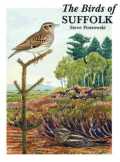
|
|
Where to Watch Birds: East AngliaPeter & Margaret Clarke
Christopher Helm
4th edition
2002
"East Anglia is one of the best birding regions in England. With its extensive areas of nationally scarce habitat such as the fens, reedbeds, undisturbed beaches and Breckland heath, it can be the only place to see several of England's most exciting birds. This is a guide to where to go in East Anglia to see many different species. It contains site accounts, plans, maps, lists of birds in the region and advice on planning birdwatching trips. This fourth edition is revised and updated."
|
Buy from amazon.co.uk 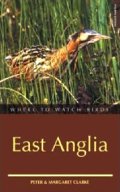
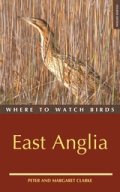 |
|
Easy Birdwatching Again: A Guide To 59 Sites In Suffolk Suitable For The Less MobileSuffolk Ornitholigists Club
2002
|
Buy from amazon.co.uk 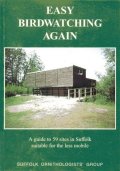
|
|
Watching Wildlife in Suffolk: A Guide to Suffolk Wildlife Trust Nature ReservesEditor: Audrey Boyle and Bill Stevenson
Suffolk Wildlife Trust
2001
|
Buy from amazon.co.uk 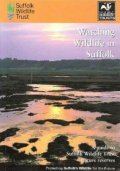
|
|
Survey of Breeding Raptors & Owls in Suffolk 1995-1998Mick Wright
Suffolk Ornitholigists Club
1999
|
Buy from amazon.co.uk 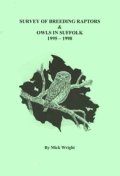
|
|
Where to Watch Birds: East AngliaPeter & Margaret Clarke
Christopher Helm
3rd edition
1995
"One in a series of in-depth guides to birdwatching in different regions. Each book contains site accounts, plans, maps, lists of birds in the region and advice on planning birdwatching trips. Perhaps the most rewarding birdwatching region in England, East Anglia is enduringly popular with birdwatchers. This popularity has been reflected in Where to watch birds in East Anglia. The authors provide in-depth coverage of the best sites in the counties of Norfolk, Suffolk, Essex and Cambridgeshire. For this edition, site accounts and maps have been fully revised and there is a new section - The Change in Status of the Area's Breeding Birds."
|
Buy from amazon.co.uk 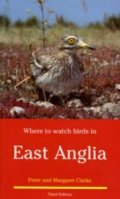
|
|
Flying in the Face of Nature: A Year in Minsmere Bird ReserveSimon Barnes
Pelham Books
1992
"This is an account of a year at Minsmere, Britain's greatest ornithological nature reserve, situated in the shadow of Sizewell on the east coast of Suffolk. This book examines the birds, the people and the habitat of Minsmere, providing a case study for environmental and conservation dilemmas that have world-wide implications."
|
Buy from amazon.co.uk 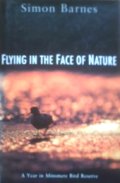
|
|
Birds of Anglian Water ReservoirsJohn Andrews
Illustrations: Mike Langman
Anglian Water
1992
Introductory sections cover birdwatching at reservoirs, field notes & records, caring for birds, wildfowl counts, bird ringing and conservation activities and include a regional map showing anglian water reservoirs. The reservoirs included are Alton Water, Ardleigh Reservoir, Cadney Reservoir, Caldecotte Lake, Costessey Pits, Covenham Reservoir, Foxcote Reservoir, Grafham Water, Hollowell Reservoir, Hyde Lane, Pitsford Water, Ravensthorpe Reservoir, Rutland Water and Willen Lake.
|
Buy from amazon.co.uk 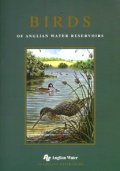
|
|
Where to Watch Birds: East AngliaPeter & Margaret Clarke
Foreword: Lord Peter Melchett
Christopher Helm
2nd edition
1991
"East Anglia remains the most rewarding area in England for birdwatchers. This fully revised edition of a standard text contains the most up-to-date information available on the region. The detailed coverage of each site, and the wealth of information throughout the book ensure that this guide will be sought after by resident and visiting birdwatchers alike."
|
Buy from amazon.co.uk 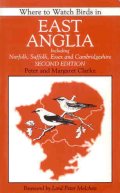
|
|
Easy Birdwatching: Birdwatching Spots In And Around Suffolk Which Can Be Viewed By Those Less MobileSuffolk Ornitholigists Club
1990
|
Buy from amazon.co.uk 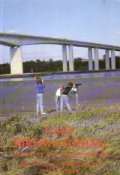
|
|
Management of Heathlands for Nightjars at Minsmere, SuffolkN.D. Burgess, C.E. Evans and J. Sorensen
RSPB
1989
|
 |
|
Where to Watch Birds: East AngliaPeter & Margaret Clarke
Christopher Helm
1987
|
Buy from amazon.co.uk 
|
|
The Birds of SuffolkWilliam H. Payn
Ancient House Publishing
2nd edition
1978
|
Buy from amazon.co.uk 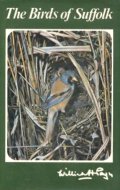
|
|
Birds of Prey in Suffolk 1973-1978A.R.J. Paine
Suffolk Ornitholigists Club
1978
|
Buy from amazon.co.uk 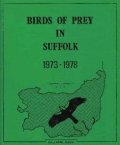
|
|
East Anglia and its Birds Peter Tate
H F Witherby and Sons
1977
"East Anglia is a region of great ornithological interest. It contains a wide variety of landscape which is reflected in the diversity of its birdlife, and is the home of a number of important bird reserves and observatories. The Broads and Fens, the rich farmlands, forests, heathland and Breckland, together with the coastal areas provide an extensive range of habitats for breeding species, some of which breed, in Britain, only in East Anglia. The proximity of the continent results in the regular occurrence of rare and scarce birds, sometimes in great numbers. The author describes the structure of the region, its history, and the influence these have had on the birdlife. He devotes separate chapters to the main areas, giving much useful information about the birds the reader is likely to see whilst visiting. Another section provides short biographies of those naturalists of the past who have, by their observations, laid the foundations of the literature. The book concludes with a complete list of all species known to have occurred in East Anglia, together with a summary of their distribution and status."
|
Buy reprint from amazon.co.uk 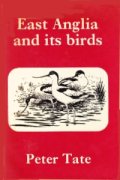
|
|
Minsmere Portrait Of A Bird ReserveHerbert Axell and Eric Hosking
Hutchinson
1977
"The fame of the RSPB reserve at Minsmere in Suffolk is recognized not only by the thousands of visitors it has each year but also by all who watch and photograph birds throughout the world. Much of the credit for Minsmere's reputation belongs to Herbert Axell, for seventeen years the reserve's warden,who was mainly responsible for developing the different habitats which now attract such large numbers of birds......In his text Herebert Axell tells the full story of the reserve-its geology, history, planning and construction. His chapter on the making of the scrape, retailing the conception and development of this modern method of providing safe breeding sites for endangered species, and his chapters on Bitterns, Marsh Harriers, Avocets and Bearded Tits are the highlights of an absorbing and fascinating narrative."
|
Buy from amazon.co.uk 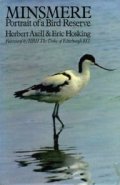
|
|
The Birds of SuffolkWilliam H. Payn
Barrie and Rockliff
1962
|
Buy from amazon.co.uk 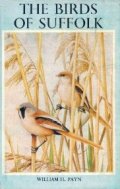
|
|
Bird Pageant: Field Studies Of Some East Anglian Breeding BirdsA.W.P. Robertson
Batchworth Press
1954
192 pages with 44 b/w plates. Observations of birds and an account of setting up RSPB bird sanctuaries in East Anglia.
|
Buy from amazon.co.uk 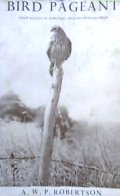
|
|
A History of the Birds of SuffolkClaude B. Ticehurst
Gurney & Jackson
1932
|
Buy from amazon.co.uk 
|
|
Catalogue of the Birds of Suffolk: With An Introduction And Remarks On Their DistributionChurchill Babington
John Van Voorst
1884-1886
"This Catalogue is reprinted from the Proceedings of the Suffolk Institute of Archaeology and Natural History, and was issued to the Members in 1884, as far as the end of the Land Birds (p. 110), the remainder being issued in 1886."
From the introduction: "A considerable number of specimens of rare birds are to be found in Suffolk, both in public and private Collections, about which no localities or particulars of any kind are recorded. In many cases, very few if any details can now be ascertained from the length of time which has elapsed since these birds were taken. Many interesting facts about others are still remembered, but are in danger of being lost to science because they have never been pub- lished.* This being more and more impressed upon me by continued observation, the thought occurred to me of endeavouring to make a list of all the birds which I could in any way discover to have been observed, or obtained, in Suffolk. In order to make this list as complete as possible, it became necessary to examine and record the birds contained in such Collections as I had access to, both public and private, both great and small ; and to pick up such trustworthy information as I could get from naturalists, sportsmen, bird-stuffers, gamekeepers, and indeed from all sorts and conditions of men. It became also requisite to investigate the literature of the subject, and the information scattered in a large number of books and periodical publications."
|
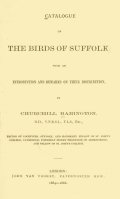
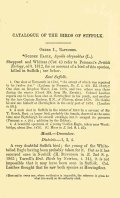 |
|
A Catalogue Of The Norfolk And Suffolk BirdsWith Remarks By The Rev. Revett Sheppard, A.M.F.L.S. and the Rev. William Whitcar, A.M.F.L.S.
Volume XV, Pages 1-62
Transactions Of The Linnean Society
1827
Opening lines: "The proximity of the counties of Norfolk and Suffolk to the northern part of the Continent, affords an opportunity to many migrative species of birds to visit these parts of the kingdom, in their passage to and from their breeding haunts. The abundance of food which the sea-coasts, rivers, and marshes supply to the waders and web-footed birds forms an attraction to these tribes. Hence this district is particularly favourable to the pursuits of ornithologists. The following paper has been drawn up with a view to facilitate such pursuits, and to illustrate the history of several species of birds. Its object will be sufficiently answered if this end shall be in any degree accomplished; and, at the same time, some light thrown upon the wisdom and goodness of the Author of Nature in the works of his creation.The classification and names adopted are those of the second edition of Temminck's Manuel d'Ornithologie, a work which evinces in its autlior a more extensive and accurate acquaintance with the birds of Europe, than any other that has been hitherto published."
|
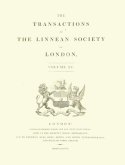

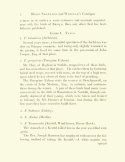 |
|